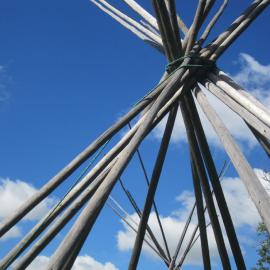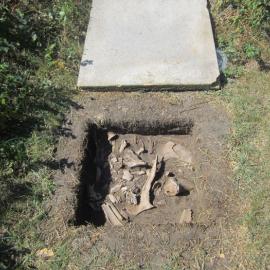At a well-known archaeological site in Alberta, a diverse group of individuals gather together on a large tarp to participate in a ceremonial feast. A Plains Cree woman, having discovered that the ancestral spirits at this site were hungry, had invited a ceremonialist from her community to carry out the feast.
I tagged along since, as an anthropologist studying archaeological and heritage management practices in Alberta, the gathering greatly sparked my interest.
As many people working in Alberta’s heritage sector are aware, First Nations’ ceremonial activity at archaeological and heritage sites has undergone a recent increase in frequency. And, people working in this area are likely familiar with the broad range of issues which may arise as ceremonial laws and practices interact with the laws and practices of Alberta’s framework for heritage management. While in some instances these interactions result in meaningful dialogue, long-term relationships and collaborative solutions, in others they may lead to countless roadblocks and failure to reach any kind of consensus.
My own research, carried out through the archaeology department at Memorial University of Newfoundland, sets out to understand the complex and subtle dynamics which both inform and emerge from processes whereby Plains Cree heritage is managed by the province of Alberta. I start by drawing into question the assumption that there is a single, stable, agreed-upon reality, and from there I investigate how and why contestation and conflict, or collaboration and cooperation, emerge as interactions between more than one reality take place.
To illustrate, here I return to the scene described above in order to recount a brief exchange, as the feast came to a close, between the site’s archaeologist and the Plains Cree ceremonialist.
Archaeologist: Thanks for coming, I'm so glad you could make it.
Ceremonialist: Yeah, glad we could come.
Archaeologist: You should come back sometime, I'd love to tell you more about the work we do here.
Ceremonialist: Yeah, sounds good... you know, we have our own way of finding buffalo skulls under the ground, and we don't even have to dig to find them.
Evidently, the archaeologist and the ceremonialist see material under the ground in very different ways. Though referring to the same material objects, the archaeologist sees them according to their training in excavation, documentation, and interpretation; the ceremonialist sees them according to knowledge derived through adherence to a system of ceremonial protocols. These sets of practices, though situated in very different realities, also have many parallels. Each is passed on through a particular lineage of teachings. Each carries its own conceptions of time and space, and its own methods of ethically transmitting information. And, perhaps most importantly, each carries its own obligations which are mandated as ‘law’.
My research asks: where is one reality or set of laws given priority over the other, and with what consequences? Under what circumstances can meaningful dialogue take place?
Photographs: courtesy of Claire Poirier, used with permission.
Claire Poirier is a PhD student in archaeology at Memorial University pf Newfoundland and an IPinCH Fellow. This article first appeared in the Archaeological Society of Alberta Newsletter Issue 1, Dec 2012 & Jan 2013. Please direct comments or questions to: ccp368@mun.ca.







